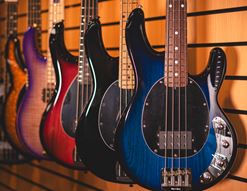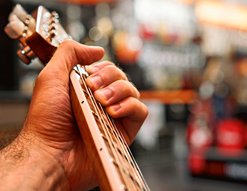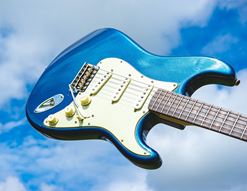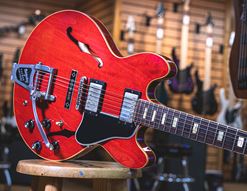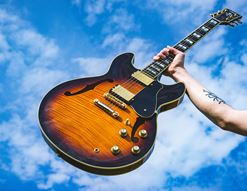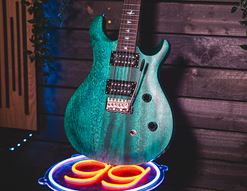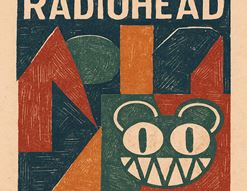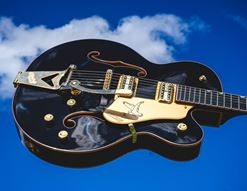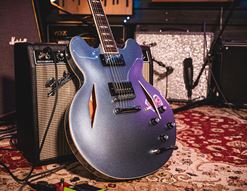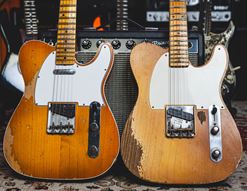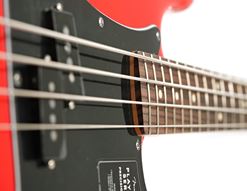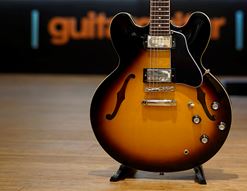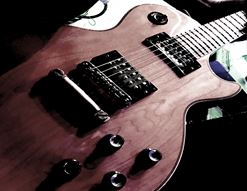Guitarguitar is the Home of Gibson. Since day one of our business, some 20 years ago, we’ve been passionate about Gibson and Epiphone guitars. We endeavour to have not only the biggest selection in the UK, but the best selection; the most availability of standard and limited edition models, and as many prime examples of Gibson’s glorious Custom instruments as we can possibly source.
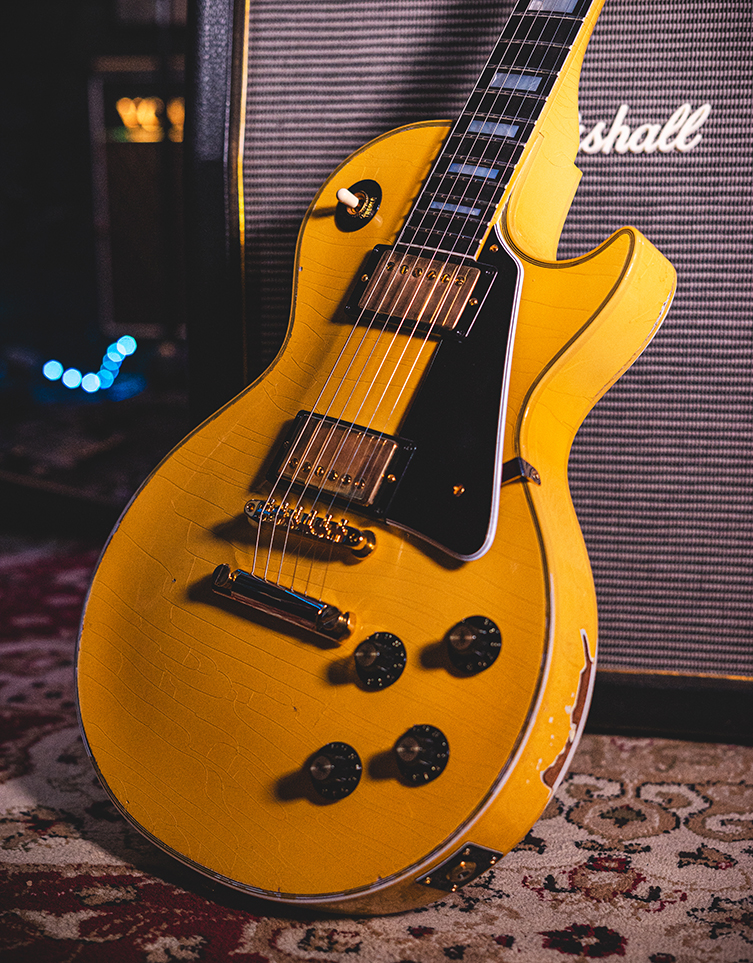
The idea is to give you the absolute best environment in which to view, select, try and buy a new Gibson guitar. From Nashville electrics to Montana acoustics, we love them all and want to offer the very best that Gibson make. Today, I aim to talk a little about that, and bring some choice pieces of eye candy along for the ride!
I’ll also be showing plenty of love for Epiphone, too. Epiphone have upped their game so significantly in recent years that they are a genuinely legitimate choice for pro players. Their current lineup of guitars is pretty stunning, so today is all about taking a good deep look at what’s currently out there from two of the greatest guitar brands in the world: Gibson and Epiphone.
Contents
Guitarguitar: The Home of Gibson
Gibson USA
Gibson USA is the name for the main Gibson catalogue of guitars and basses. Made in Nashville, Tennessee, Gibson USA guitars are aspirational, classic instruments rich in the romance and mythology of the Gibson heritage. This is where all of the Les Paul Standards, SGs, ES335s and the rest of them come from. If it’s a Gibson, it’s made in America.
There is a high level of ‘hands-on’ building in the Nashville workshop. Gibson guitars are generally more complicated to build than other styles of guitar, mainly due to the glued-in necks and carved tops of many styles. Models like the Les Paul have their tops carved by hand, and guitar such as the ES-335 have their bodies bound by hand using a relatively time-consuming process that simply cannot be done by machine.
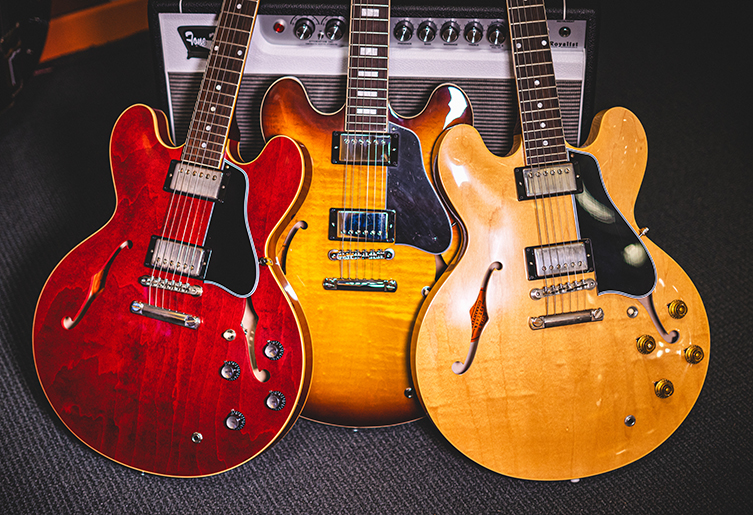
All of this hands-on attention makes a big difference to the end product: if Gibson are well-known for their powerful sound and beautiful looks, then the secret sauce is in how they feel and play. Gibson players will already know this, and those who are yet to try one are in for a treat!
Now, you all know the immortal guitar designs made by Gibson, but let me take a second to cover the main styles that are out there…
Les Pauls
It’s the most famous Gibson design of all, and remains the company’s best seller. The Les Paul was codesigned in the early fifties by artist/inventor/genius Les Paul and Gibson factory manager John Huis, all of which was overseen by company president Ted McCarthy. The models you’ll buy today are remarkably similar to those from the 50s, such was the success of the initial design.
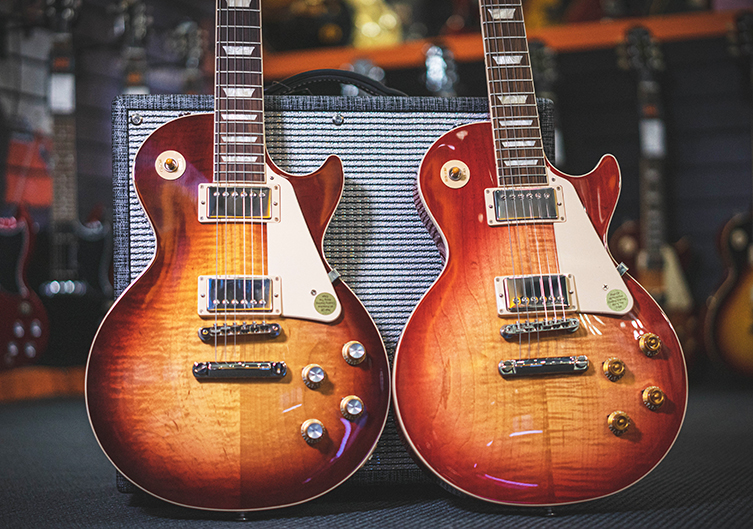
The Les Paul is obviously iconic looking, but the sound is equally famous. The rich, thick sounding sonorous tones from a Les Paul are distinct within the guitar world: there’s really nothing quite like it.
Today, the Les Paul is available in a wide range of variants. You have the traditional Les Paul 50s Standard, which is by some margin the most popular choice, and with a Heritage Cherry Sunburst finish, arguably the very definition of the instrument. The other end of the spectrum is the Les Paul Modern, a weight-relieved Les Paul with a range of metallic finishes and lots of extra features and switching options. Players seem to either want their Les Pauls as historic as possible, or as contemporary as possible without straying too far from the blueprint. Gibson caters for both!
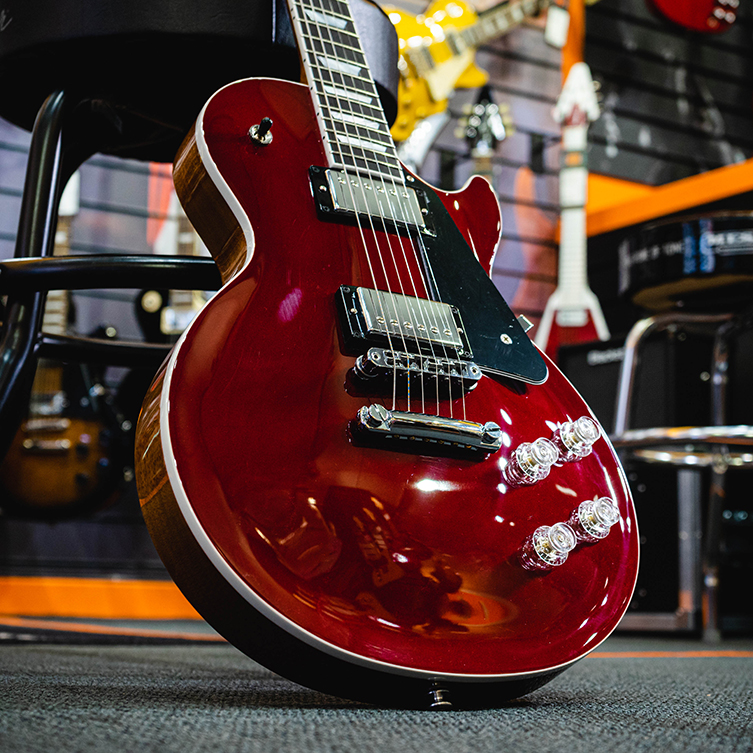
For a more detailed dive into the Les Paul models, click through to my Gibson Les Paul Models Compared blog, where you’ll get the lowdown on the Les Paul Studio, the Les Paul Classic and the Les Paul Special.

Artist models are available too, including a number by Slash, who is easily one of the most visible Les Paul players of all. Many artist instruments are available as both Custom Shop models (see below) and Gibson USA guitars, such as Kirk Hammett’s famous Greeny Les Paul.
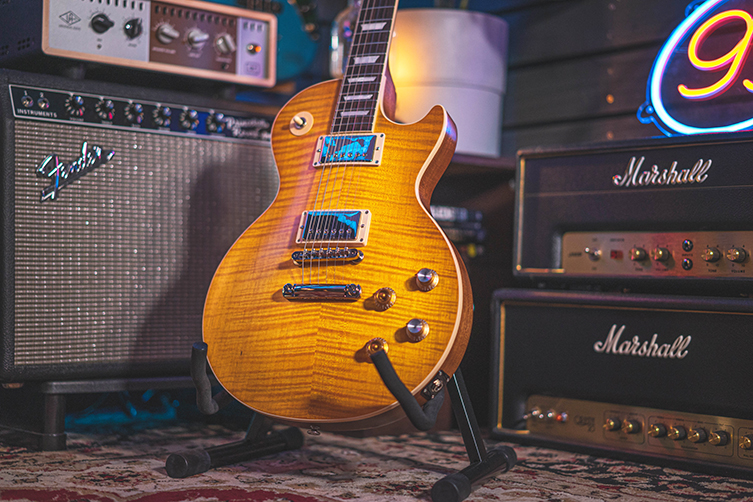
ES335
The Gibson ES335 is an enduring classic that, unlike many guitars, crosses almost all genres from blues and jazz to rock and indie. A semi hollow guitar, the ES335’s body (the name comes from ‘Electric Spanish’ plus its price of $335 in the fifties) has an inner centre block of maple with two hollow areas adorned with violin-style f-holes.

The ES-335 offers a different look, feel and sound to the likes of a Les Paul. It’s less dense sounding, and so is perhaps more able to fit into a wide variety of styles.
Variations on the 335 include the ES345 and (Custom Shop) ES355, which both build on the initial premise with increasingly decorative elements included.
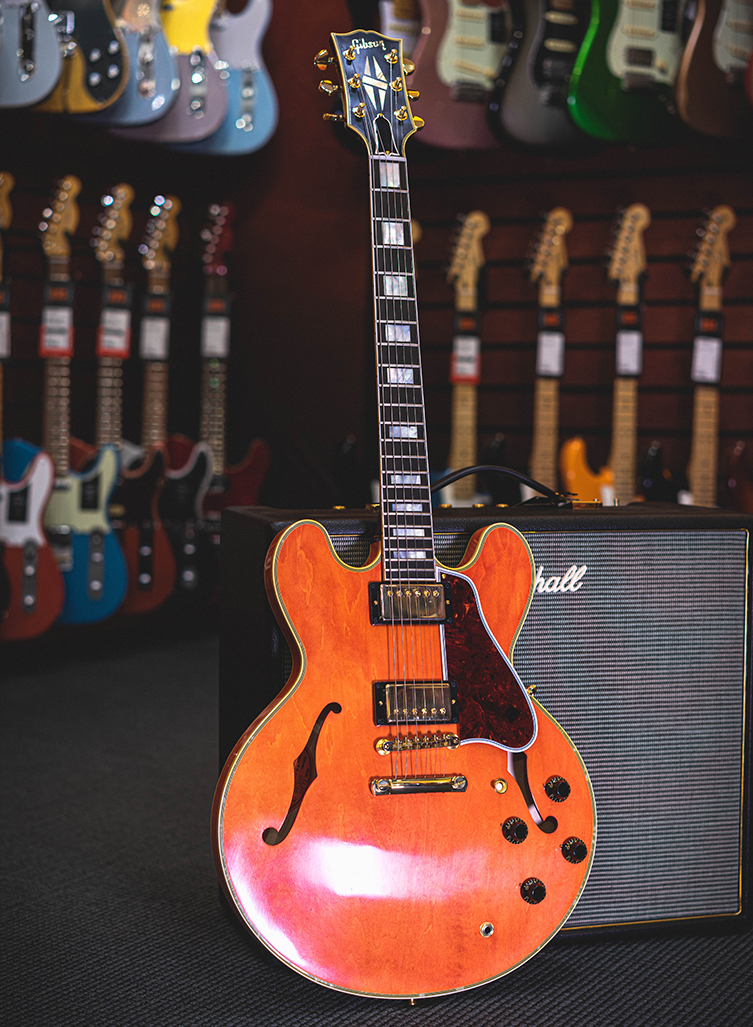
The downsized Gibson ES-339 is available too, for those who prefer their Gibson semi to be a little smaller. Built in the same manner as the 335, the ES-339 is around the size of a Les Paul, so is easier to manage for some players. Either way, these guitars are classic Gibson through and through.
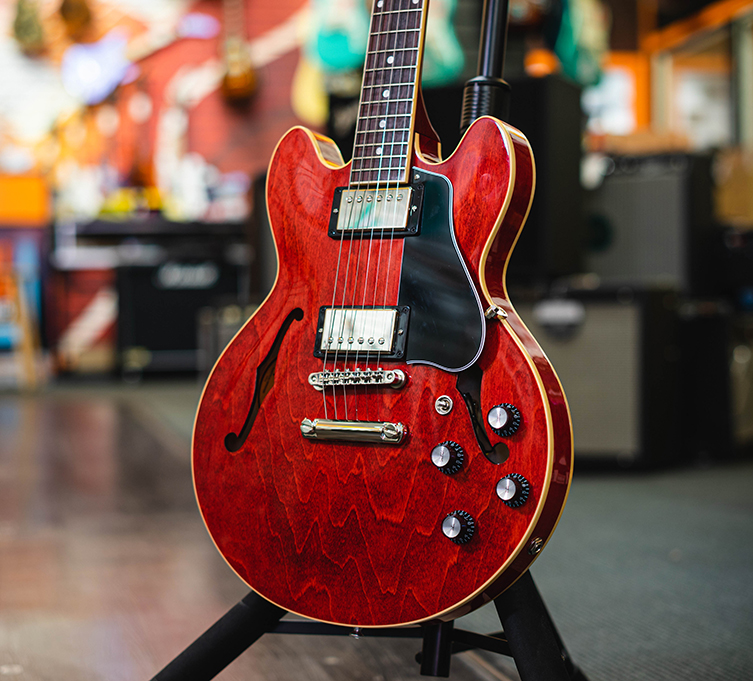
SG
For those about to rock, you’ll be wanting an SG! Slimmer and more aggressive looking than a Les Paul, the SG is the choice for rockers like Angus Young and Tony Iommi. The classic Gibson SG Standard is an essential inclusion in any Gibson catalogue (Cherry red, of course) but there are more models to check out too: the Gibson SG Standard 61 has a slimmer neck, a different shade of Cherry and a smaller pickguard (available with or without a Vibrola tremolo)…
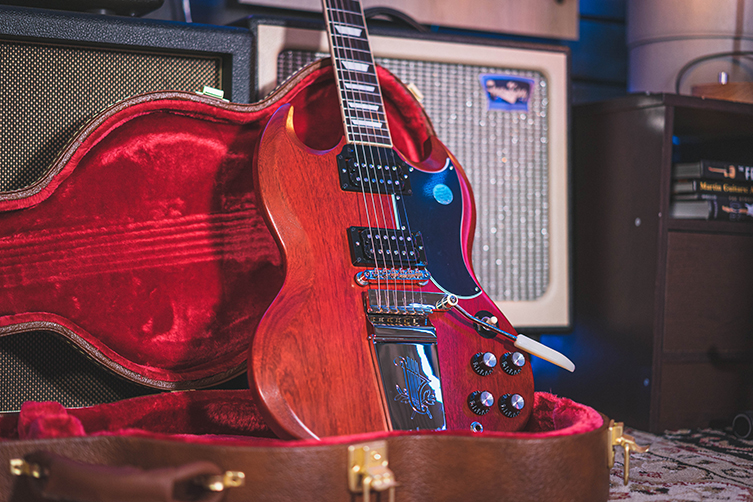
…and the SG Special with its two P90 pickups and wraparound bridge. It’s raw, it’s ready to rock and it’s an underrated version of the classic SG.
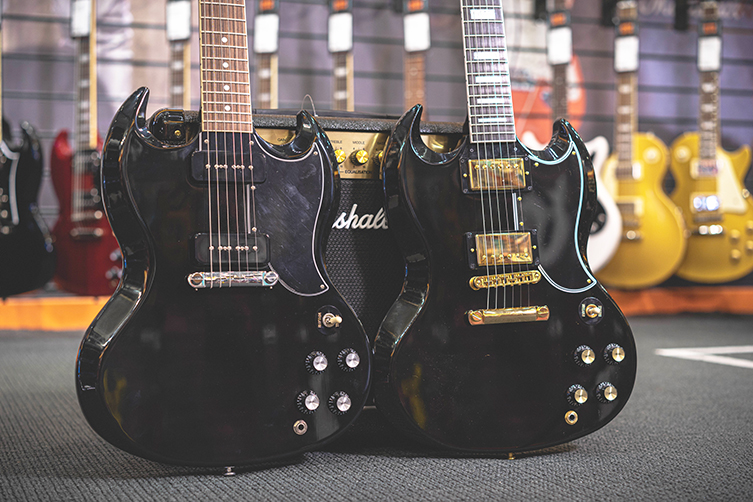
For guitarists who want some of that fabled Gibson grunt, but perhaps need a sound that’s able to be ‘skinnied up’ somewhat, the SG is a popular choice.
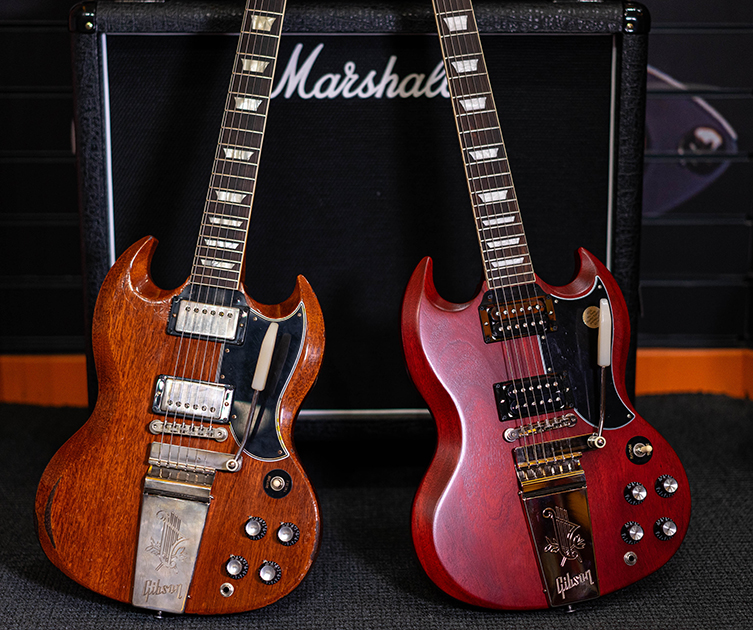
Flying V/Explorer
Gibson’s ‘shape’ guitars were maybe not quite appreciated in their day, but it’s more a case of them being ahead of their time, because people love them these days!
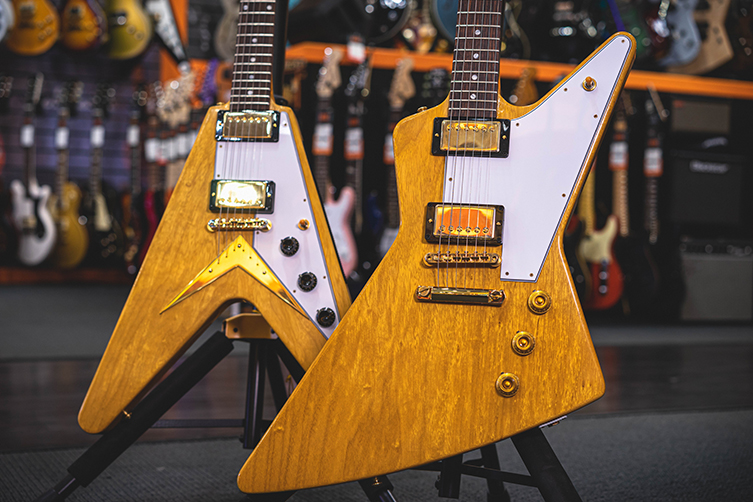
The Flying V and the Explorer were part of the Futura range of guitars in the late 50s and they still have an air of the future about them today. Extreme angles, oversized bodies and instantly identifiable silhouettes have made the Gibson Flying V and the Gibson Explorer well-loved guitars, particularly in the rock and metal worlds.
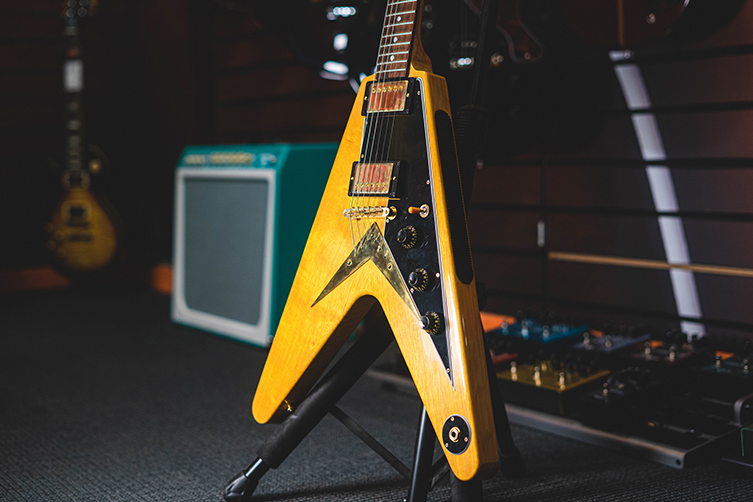
Gibson Custom Shop
The Gibson Custom Shop is where the best, most exhaustively detailed and handbuilt guitars are made. The Custom Shop is a dedicated space within the Gibson Nashville premises, and are created in far smaller numbers than standard production guitars.
Many Gibson CS guitars are historic models: they are based on specific guitars from particular years (say, for example, a Les Paul Standard from 1959), and great pains are taken to recreate not only the correct sound and feel, but the exact paint hues, the correct plastic for the pickguards and the same exact type of electronics. Actual vintage examples are studied forensically by the Custom Shop artisans, and replicas are built to be so close, they’d fool any expert.

Considering that only a few hundred Les Paul Standards were built between 1958-60, the replicas built today are absolutely as close as most of us will get to those magical ‘Holy Grail’ guitars.
There is also an increasing range of artist-specific guitars being released from the Gibson Custom Shop. The famous ‘Greeny’ Les Paul (owned by Peter Green, Gary Moore and now Kirk Hammett) has been an extremely popular example, with all of the idiosyncrasies (pickup wiring, mismatched tone knobs, colour fading etc) that make the original such a desirable instrument.
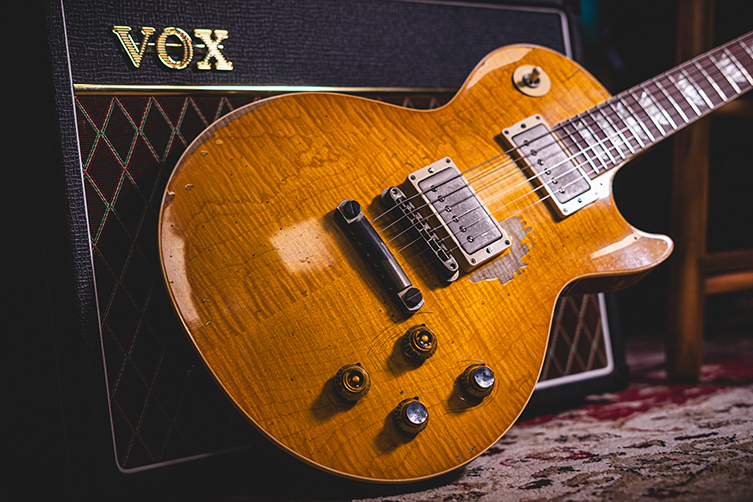
The famous Les Paul Custom is built in the Custom Shop too. This well-loved Les Paul is considered one of the most beautiful models in existence, with its ‘tuxedo’ look made up with multiple plies of binding on the edges of the body, a larger headstock with a ‘split diamond’ inlay and further block inlays on the ebony fingerboard. It’s the champagne of Les Pauls, basically.
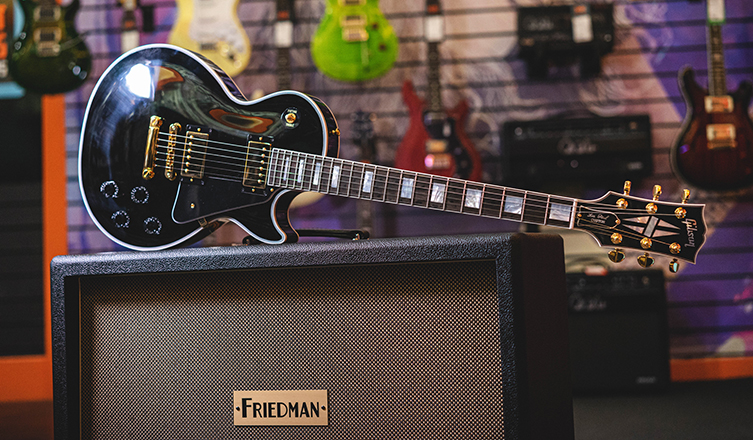
Murphy Lab
Some Gibson Custom Shop guitars are awarded a special extra level of detailed work. This is carried out by Tom Murphy and his team at the Murphy Lab, who are dedicated specialists in the art of ageing guitars.
Murphy has been famed for his relic work for many years, and now it’s official, as it were, with several stages of ageing being made available through the Lab from light to heavy.
Basically, it’s all about making the chosen Custom Shop guitars look and feel indistinguishable from actual 60 year old Gibsons.
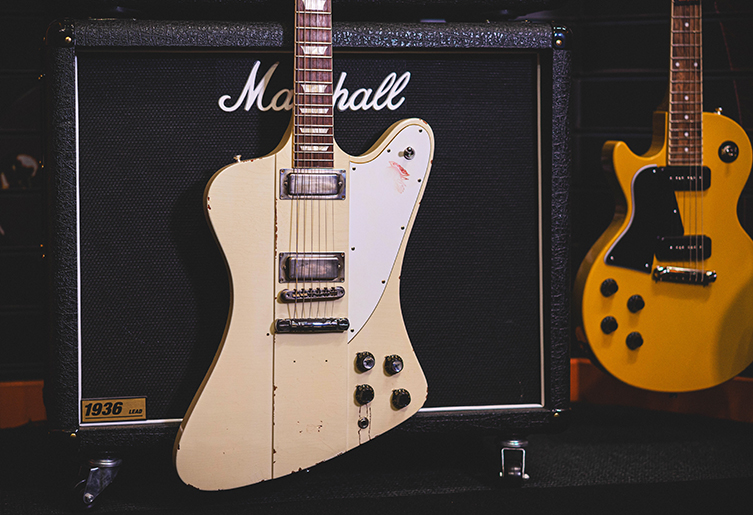
Gibson Montana
Most fans of classic acoustics would agree that Gibson acoustic guitars are amongst the most beautiful in the world. They are so stylish and timeless looking, and many of the world’s biggest artists - from Elvis to Bob Dylan, Sheryl Crow to Lucinda Williams - use them as their main instruments.
Gibson have wisely decided to include many of their most beloved models in today’s lineup, all of which are built in Bozeman, Montana. I’m talking about Hummingbirds, SJ-200s and J-45s, just for a few examples!
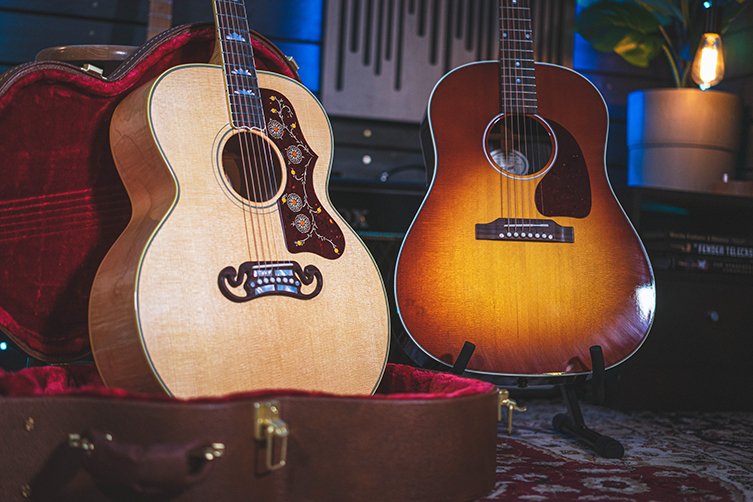
Gibson acoustics definitely have a signature sound: it’s one that is rich in upper mids, making them particularly useful in recording situations as they sit very clearly in a mix. Whether it’s a smaller bodied Gibson L-00 or a larger Dove, they all have varying amounts of the signature sound.
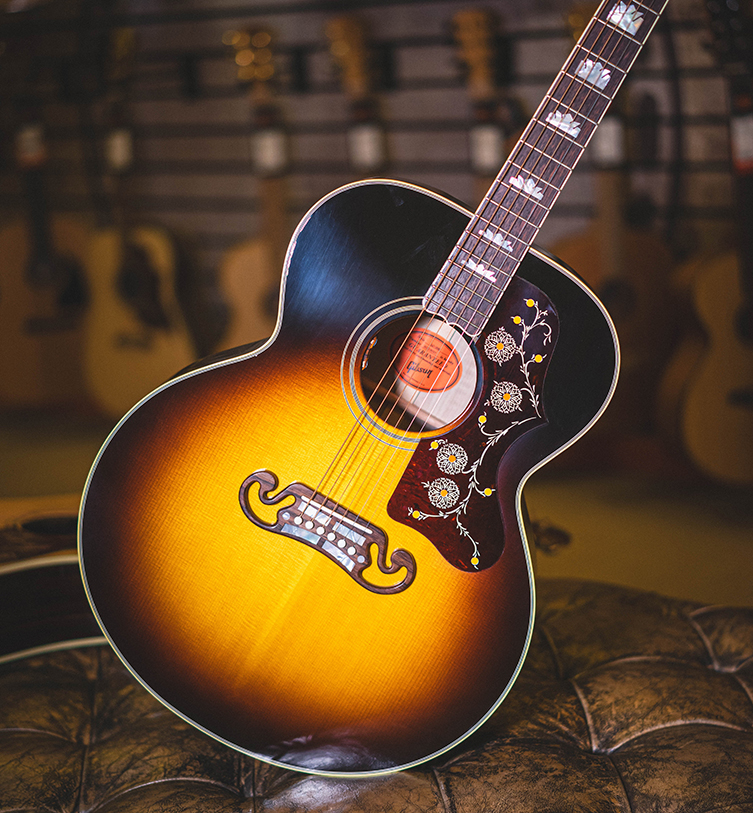
I recently had an excellent conversation with Robi Johns from Gibson Montana, and he shared some wonderful info on Gibson’s approach and ethos. Check out the entire conversation below, back here’s a cool factoid for you in the meantime: did you know that all Gibson acoustic guitar tops have a radius of 24 feet? Yes indeed, there is a very gentle curve across the top of them all, which is something I didn’t know until I spoke with Robi. Why do they do that? Watch the video and find out!
Epiphone
Epiphone, as I mentioned at the beginning, have enjoyed a significant ‘glow up’ in recent years. Whilst still providing the affordable (and legitimate) Gibson replicas that we’ve all used and loved over the years, Epiphone are now also putting out a more premium range of guitars and basses that can compete with anything out there on the market.
Chief amongst these is the Epiphone Inspired by Gibson range, a collection of instruments that includes acoustic guitars as well as electrics. Some of these even have the Gibson ‘open book’ headstock shape, a notion that was unthinkable back in the day!
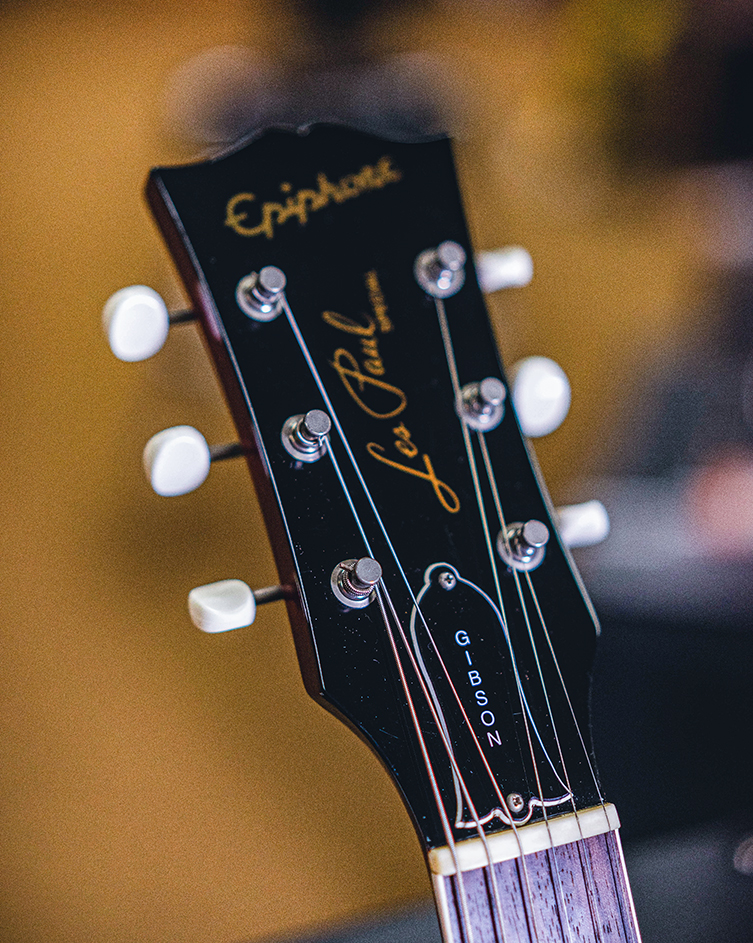
There are some real gems in the Epiphone catalogue at the moment, and a good example would be the Epiphone Adam Jones 1979 Les Paul Custom. It’s a very faithful rendering of Jones’ own favourite LP Customs (my understanding is that it’s a synthesis of two or three of his top guitars) which, interestingly, is actually more accurate to Jones’ actual guitars than the Gibson USA Adam Jones signature! The addition of the correct Seymour Duncan Distortion pickup and the Custom decorations (split diamond headstock inlay, block fretboard inlays, multiple-ply binding etc) combine to paint a picture that is remarkably accurate, save for the name on the headstock!
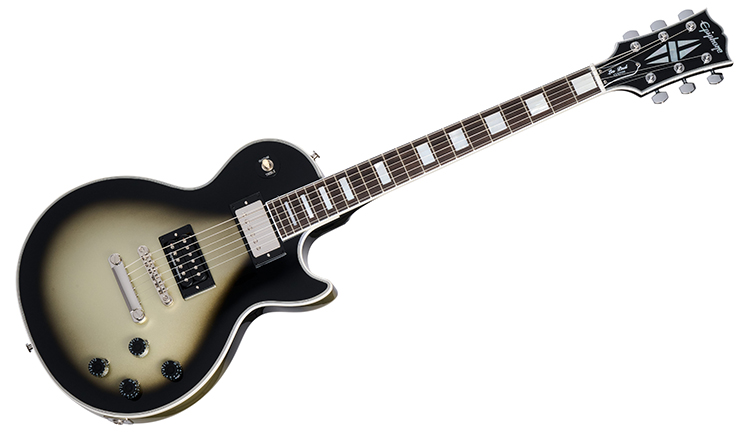
Guitarguitar: The Home of Gibson
Experience the world of Gibson guitars properly at guitarguitar. If you love guitars - and I get the feeling that you do if you’ve made it this far into the blog! - then you love Gibson guitars. If that’s the case, you deserve to walk into a store and see all of the varieties on the wall, ready for you to try out. You’ll better appreciate the differences in both finish (there are a lot of sunburst variants out there!) and neck feel when you can appraise them in person.
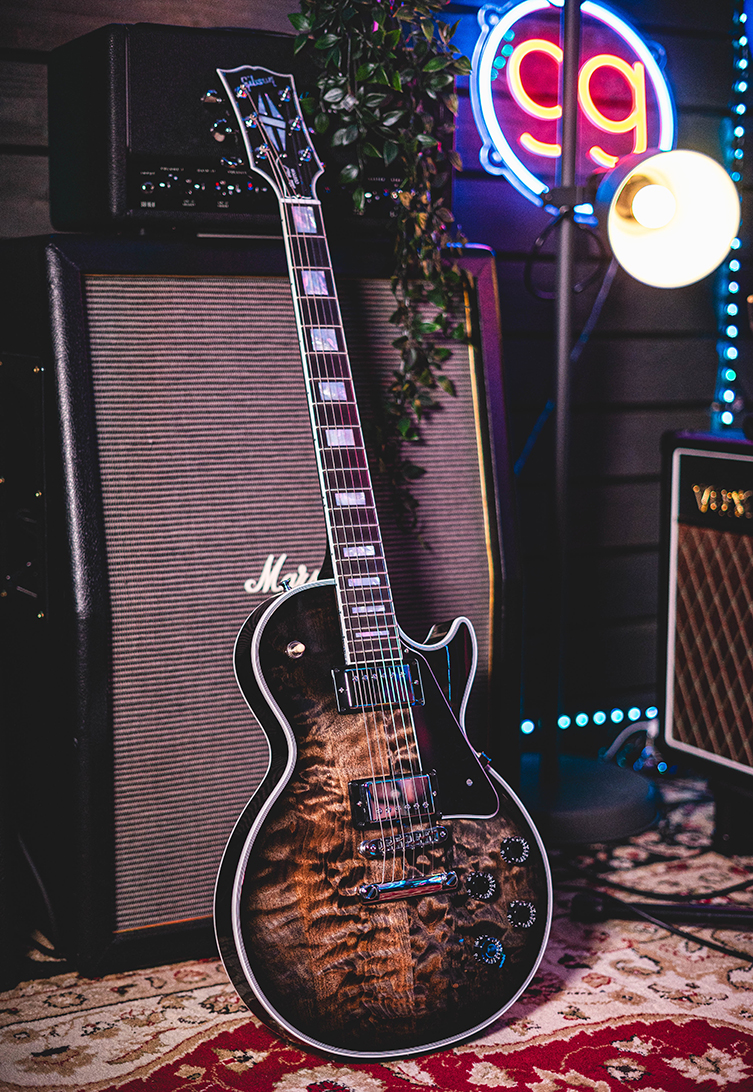
We photograph every individual Gibson guitar that has a figured top (and all Custom Shop and Murphy Lab guitars whether they have figured tops or not) for the website, so that you can see and choose the exact guitar you want. We think that’s important, and that’s why you’ll see so many Gibsons on our site. We love them and we realise that each one is unique. When choosing a new guitar, it should speak to you: whether that’s as an accurate image online or when you have it in your hands in one of our stores.
There really is only one place to get the exact Gibson you want: guitarguitar.
Click to View our Gibson Guitars

